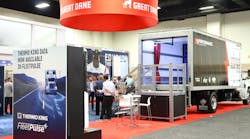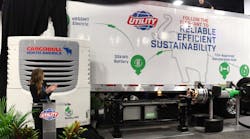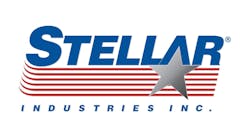The U.S. Environmental Protection Agency (EPA) recently announced the launch of the Cleaner Trucks Initiative aimed at decreasing nitrogen oxide emissions from heavy-duty trucks.
“The Cleaner Trucks Initiative will help modernize heavy-duty truck engines, improving their efficiency and providing cleaner air for all Americans,” said Andrew Wheeler, EPA’s acting administrator. “The U.S. has made major reductions in NOx emissions, but it’s been nearly 20 years since EPA updated these standards. Through rule-making and a comprehensive review of existing requirements, we will capitalize on these gains and incentivize new technologies to ensure our heavy-duty trucks are clean and remain a competitive method of transportation.”
Though there are few specifics yet, EPA said it intends to publish a rule in 2020 and wants to simplify the certification of compliance requirements for heavy-duty trucks and engines. Officials noted between 2007 and 2017, NOx emissions dropped by more than 40%, but that heavy-duty trucks will be responsible for one-third of NOx emissions from the transportation sector in 2025.
The announcement comes as California continues work on developing its own tougher truck regulations.
“As an industry engaged in interstate commerce, ATA strongly favors a single national emission pathway as opposed to a patchwork of state standards,” said Bill Sullivan, executive vice president of advocacy for the American Trucking Associations. “We look forward to working with the EPA in developing a standard that achieves nationwide air quality improvements across the country while maintaining a strong and robust economy.”
Other industry groups including the Diesel Technology Forum, and Truck and Engine Manufacturers Association (EMA) also applauded EPA’s announcement.
“The new Cleaner Trucks Initiative announced today sets the vision for the heavy-duty diesel engines of the future as high-value assets which help achieve our nation’s future energy and clean air goals while also expanding economic growth,” the Diesel Technology Forum wrote in a statement.
Jed Mandel, EMA’s president, called the Cleaner Trucks Initiative “a tremendous opportunity.” Over the past 20 years, manufacturers have innovated and implemented advanced clean technologies to reduce NOx emissions by over 90% and particulate emissions by over 98%, according to EMA.
Mandel asked the agency to “follow that same successful roadmap by leading a collaborative, open regulatory process involving all stakeholders.”
He and Sullivan were among those appearing with EPA officials during the announcement. Representatives from the Owner-Operator Independent Drivers Association, Maryland Department of the Environment and Environmental Council of States were among the other invited guests.
Luke Tonachel, director for clean vehicles and fuels at the Natural Resources Defense Council, noted the group would be watching to “make sure the agency follows through and actually mandates the needed cuts in these smog-forming compounds. There’s ample reason for skepticism.”
This new initiative is separate from the Phase 2 greenhouse gas rule for heavy- and medium-duty trucks that will continue to be implemented in stages through 2027.









